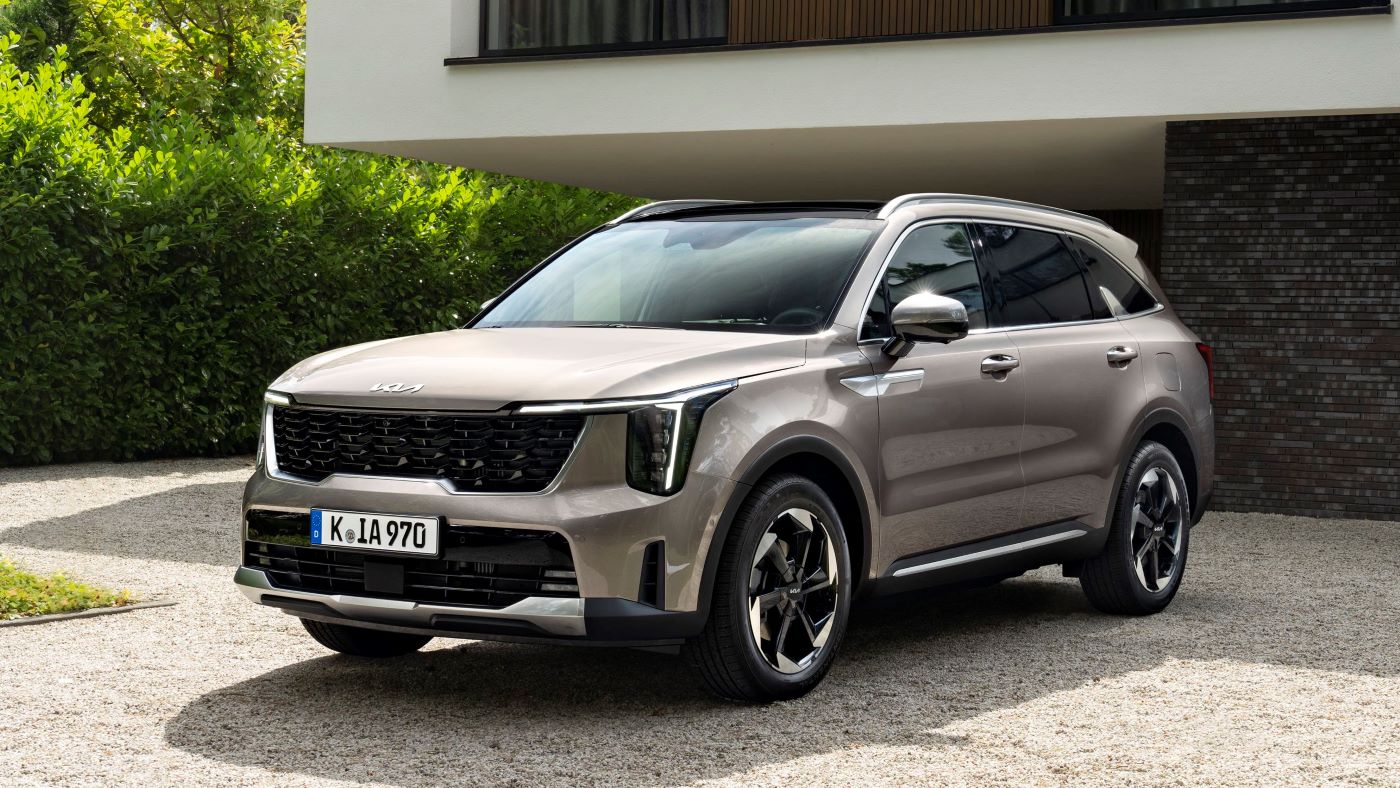Kia has undergone one of the most dramatic transformations in the automotive world. What once was a relatively obscure Korean car manufacturer, known primarily for producing inexpensive vehicles for cost-conscious consumers, has now grown into a globally respected automaker capable of competing with some of the most trusted names in the industry.
Over the past two decades, Kia has invested heavily in research, development, and design, pushing the envelope in areas such as safety, technology, and performance. Their vehicles are no longer just “cheap alternatives”—they’re frequently praised for their build quality, aesthetics, and increasingly, their longevity.
But not all Kia vehicles are created equal. Like every automaker, Kia has produced both exceptional models and those that fall short of expectations. While the brand has shown immense progress, some models—especially those developed during transitional years—have suffered from mechanical flaws, inconsistent build quality, and reliability issues that emerge long before most drivers expect them.
On the flip side, other Kia models have proven remarkably durable, offering thousands of miles of worry-free driving, even long after the warranty has expired. This duality within the Kia lineup can make it difficult for potential buyers to know which models will deliver long-term value and which might become costly mistakes.
Car longevity is a critical factor in the ownership experience. It affects not only the vehicle’s resale value but also the total cost of ownership, maintenance planning, and peace of mind. For many consumers, a car is one of the largest financial commitments they will make, and having confidence that it will serve them well over time is paramount.
Some Kia vehicles have earned their reputation through consistency, simplicity in design, and strong engineering foundations. These are the models that families pass down, college students rely on for years, and rideshare drivers use for high-mileage careers.
On the other end of the spectrum, Kia has also experimented with more complex vehicles—often in the luxury or performance segments—that haven’t aged as gracefully. These models tend to have more advanced electronics, high-strung engines, and less established mechanical platforms.
Unfortunately, these can lead to problems such as early engine failure, transmission breakdowns, or malfunctioning infotainment systems. While they may look and feel impressive during the test drive, they often lack the endurance that defines a truly reliable car.
This article is designed to cut through the noise and highlight five Kia models that have surprised owners and industry experts with their remarkable longevity, as well as five models that tend to fail early, often requiring expensive repairs or experiencing significant issues well before hitting 100,000 miles.
By exploring both ends of Kia’s spectrum, we aim to provide a comprehensive look at which models deliver lasting value and which might leave you stranded on the side of the road. Whether you’re shopping for a used Kia, considering a new purchase, or just curious about the brand’s evolution, this guide will help you make an informed decision grounded in real-world performance and durability, not just marketing promises.
Also Read: 5 Cars With Tire Sizes That Are Easy To Find And 5 That Cost A Fortune
5 Kia Models That Surprise with Longevity

1. Kia Optima (2011-2019)
The Kia Optima has long been considered one of the brand’s flagship vehicles, and the 2011-2019 model years are particularly notable for their longevity and overall durability. A key factor behind the Optima’s impressive lifespan is the exceptional build quality of its drivetrain and engine components.
Available with a 2.4-liter 4-cylinder engine or a turbocharged 2.0-liter 4-cylinder, the Optima was engineered to be both reliable and efficient, making it a top contender in the midsize sedan market. Many owners report that their Optima has easily surpassed 200,000 miles with minimal issues, a milestone that was not always expected of earlier models in this class.
Under the hood, the Optima’s engines were designed with longevity in mind, particularly when it comes to the timing chain and fuel system, both of which are known to hold up well over time with routine maintenance. While the 2.0-liter turbocharged engine, available on higher trims, provides more power, it has proven to be equally reliable, with only minor instances of turbocharger wear at higher mileages.
Additionally, the 6-speed automatic transmission in these models performs smoothly, contributing to the overall longevity of the vehicle. Owners have also praised the Optima for its quiet and comfortable ride, an attribute that holds up even after years of use. The combination of a reliable powertrain, excellent fuel efficiency, and a comfortable driving experience has made the Kia Optima a standout in the longevity category.
Moreover, the Optima’s interior, while not luxurious by premium standards, is built with durable materials that maintain their appearance over the years. Despite a few electrical glitches in early models, later generations of the Optima ironed out these kinks, making it a reliable choice for those looking for a vehicle that will serve them well for many years.
The Optima’s overall reputation for dependability has earned it a spot as one of Kia’s most surprising models in terms of long-term performance.
Its ability to maintain performance, even after crossing the 200,000-mile mark, showcases Kia’s dedication to quality in their sedans. For anyone seeking a midsize sedan with a track record of reliability, the Optima stands as a testament to Kia’s ability to build cars that age gracefully.
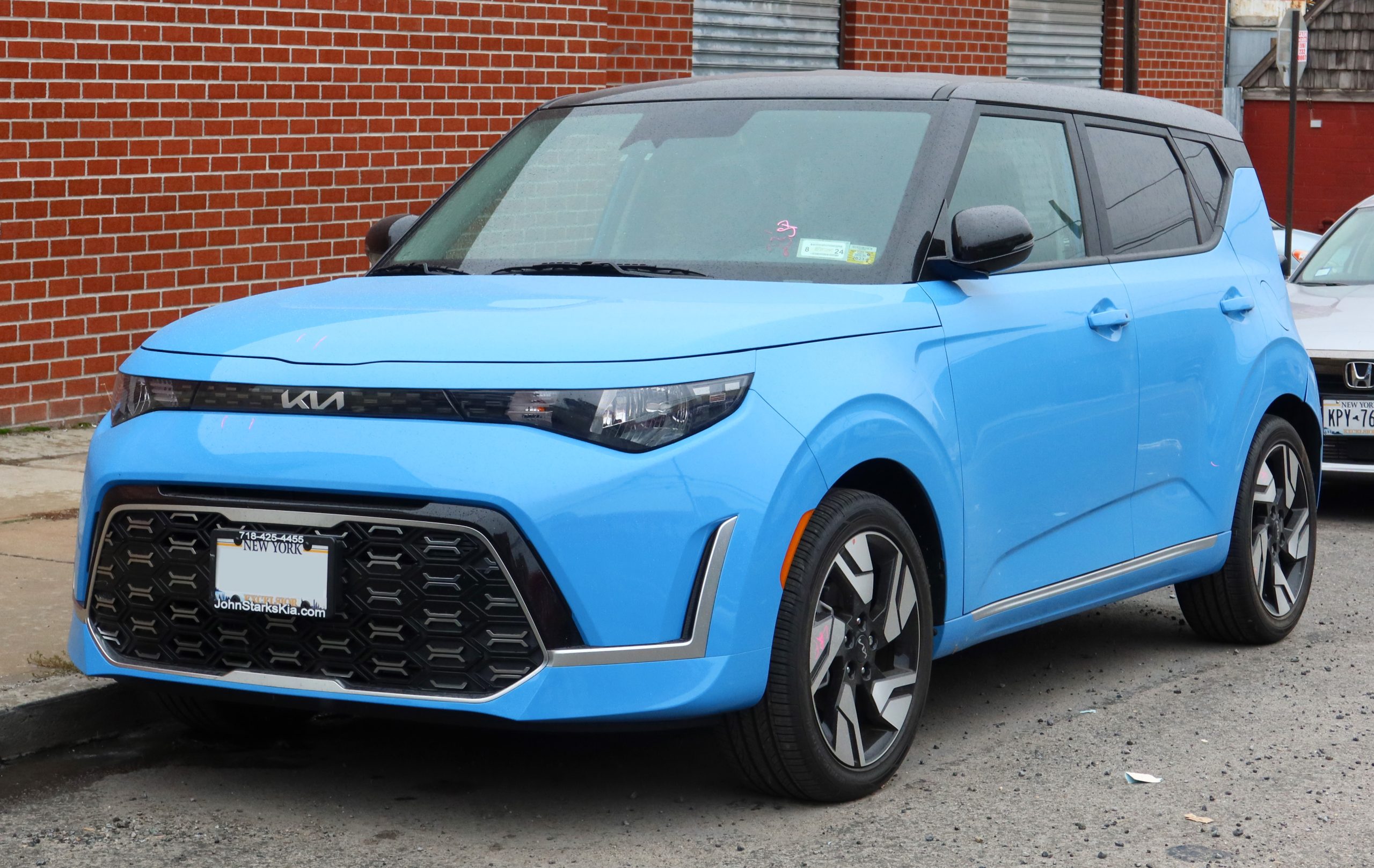
2. Kia Soul (2010-Present)
The Kia Soul has always been a quirky and fun vehicle that combines compact dimensions with a surprisingly spacious interior. But beyond its unique styling and practicality, the Soul is one of Kia’s unsung heroes when it comes to longevity.
With the 2010-present models, Kia has built a compact crossover that offers not only excellent interior space for passengers and cargo but also a reputation for reliability that far exceeds expectations in this segment. The Soul’s 1.6-liter and 2.0-liter 4-cylinder engines are durable and provide sufficient power for everyday driving without requiring much more than basic maintenance.
One of the standout features of the Soul is its relatively low cost of ownership and maintenance. Thanks to its simple engine and relatively low-tech drivetrain, the Soul is both inexpensive to maintain and reliable over the long haul. Many owners report that they’ve been able to keep their Souls running well beyond 150,000 miles, with only minor repairs needed.
Some of the common issues reported in earlier models (like suspension wear and electrical quirks) were addressed in newer generations, making the current models even more dependable.
Additionally, Kia’s continued focus on quality materials and attention to detail in the manufacturing process has led to fewer premature component failures than might be expected in a vehicle in this price range.
The Soul’s compact size and unique design make it an ideal city vehicle, but its longevity also makes it a great option for those looking for a reliable daily driver. Even with regular use, the Soul’s suspension, engine, and transmission hold up well, meaning owners don’t face the kinds of wear-and-tear issues that plague other vehicles of similar size.
Furthermore, its boxy design gives it an edge when it comes to cargo space, and the back seat offers surprisingly ample room for passengers. The Soul’s ability to maintain its performance over the years, paired with its versatility and practicality, makes it a standout example of Kia’s commitment to creating vehicles that can last for the long haul.
If you’re looking for a compact vehicle that combines quirky design with lasting reliability, the Soul is an excellent choice.
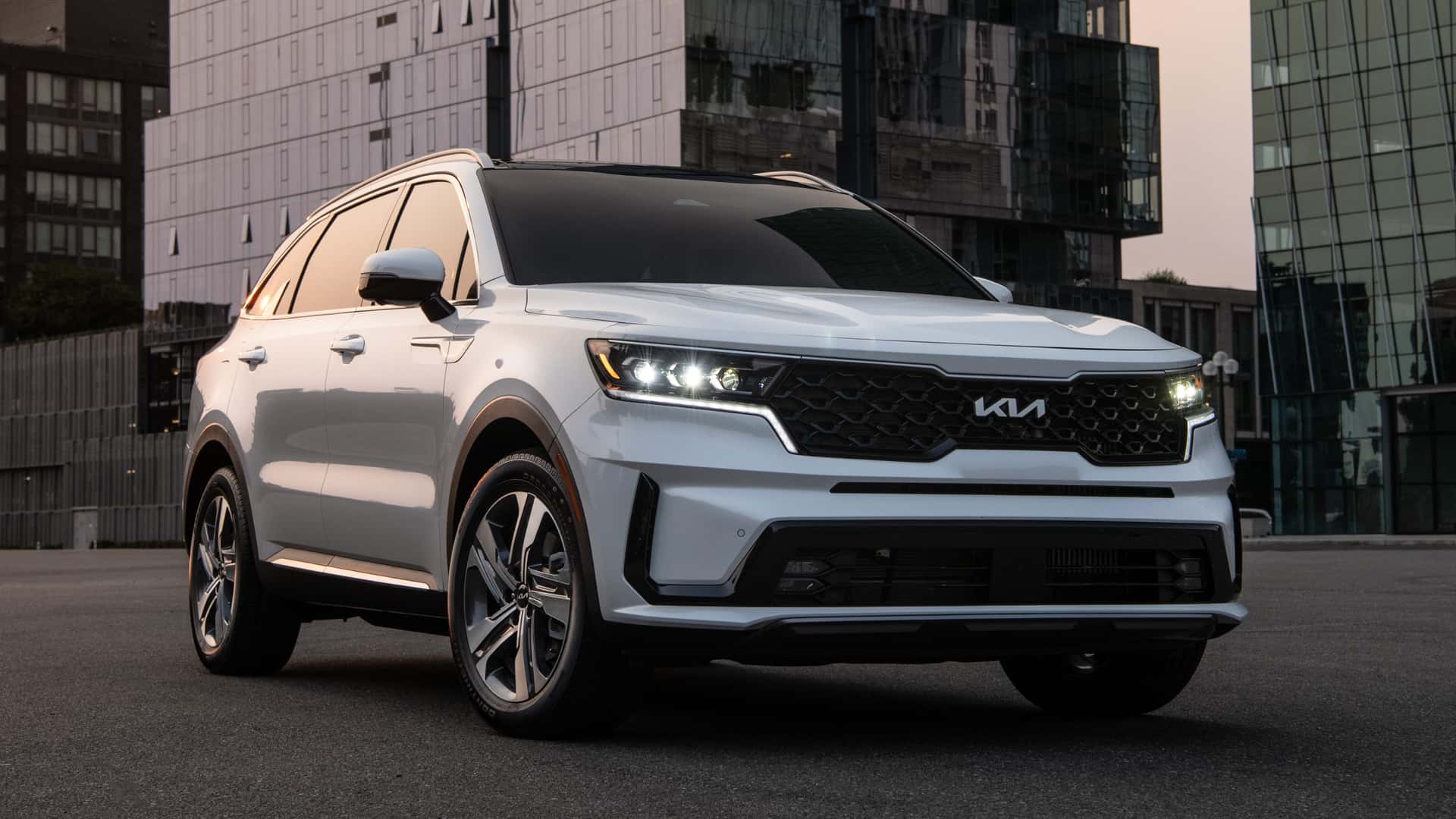
3. Kia Sorento (2016-Present)
The Kia Sorento is another shining example of Kia’s ability to create long-lasting vehicles. Since its redesign in 2016, the Sorento has become a highly sought-after midsize SUV with a reputation for durability that is rare in this competitive segment. The Sorento is available with a variety of engine options, including a 2.4-liter 4-cylinder, a 3.3-liter V6, and a hybrid powertrain.
Regardless of which engine you choose, the Sorento has proven itself to be a reliable option that ages gracefully. The 2.4-liter engine, in particular, is known for its ability to easily surpass 200,000 miles with minimal issues, as long as it receives regular maintenance.
The Sorento’s AWD system and transmission have been lauded for their performance and reliability, and many owners report that their vehicles continue to drive smoothly and efficiently well beyond 150,000 miles. While the V6 engine provides more power and towing capability, it too has proven to be durable with few reported failures.
The Sorento’s solid construction, with an emphasis on high-quality materials, ensures that the vehicle holds up well over time, both in terms of mechanical reliability and interior wear. This is particularly notable in the 2016 and newer models, which have a more refined cabin and better insulation for a quieter, more comfortable ride.
In terms of its longevity, the Sorento stands out for its low maintenance needs and its ability to remain reliable throughout its life. The Sorento’s suspension system, while designed for a smooth and comfortable ride, has been engineered to last, with few issues of premature wear compared to some of its competitors.
Moreover, Kia’s warranty coverage for the Sorento provides peace of mind for owners, ensuring that any potential issues are addressed before they can become major problems. The Sorento continues to be a top choice for families looking for a midsize SUV that will last through years of daily use and provide consistent performance on the road.

4. Kia Cadenza (2017-Present)
Though the Kia Cadenza is often overlooked in the brand’s lineup, it is a sleeper hit when it comes to longevity. The full-size sedan offers an upscale experience without the premium price tag, and the 2017-present models are particularly impressive for their durability and long-term reliability.
The Cadenza is equipped with a 3.3-liter V6 engine that is known for its smoothness and longevity. This engine is well-regarded for its quiet operation and solid performance, with many owners reporting that their vehicles continue to run smoothly well beyond 150,000 miles.
The Cadenza is built with high-quality materials that make it feel more expensive than its price suggests. Its cabin is comfortable, quiet, and well-appointed, and the vehicle’s suspension system ensures a smooth and refined ride, even as the miles pile on.
Owners have consistently praised the Cadenza for its lack of major mechanical issues, with most reports citing only minor maintenance items needed as the car ages. The vehicle’s transmission and drivetrain hold up well over time, and the overall build quality has proven to be durable, with very few reports of interior wear or issues with electronic components. For those who want an affordable alternative to more expensive sedans but still expect longevity and reliability, the Kia Cadenza is an excellent choice.
One of the key aspects of the Cadenza’s longevity is its straightforward engineering. Unlike some other full-size sedans that incorporate complex powertrains or systems that can be prone to failure, the Cadenza focuses on a well-built, reliable package.
This makes it less likely to experience the kinds of premature breakdowns that can plague more complex vehicles. For those looking for a sedan that offers both a luxury-like experience and long-term reliability, the Cadenza proves to be a surprising standout in Kia’s lineup.
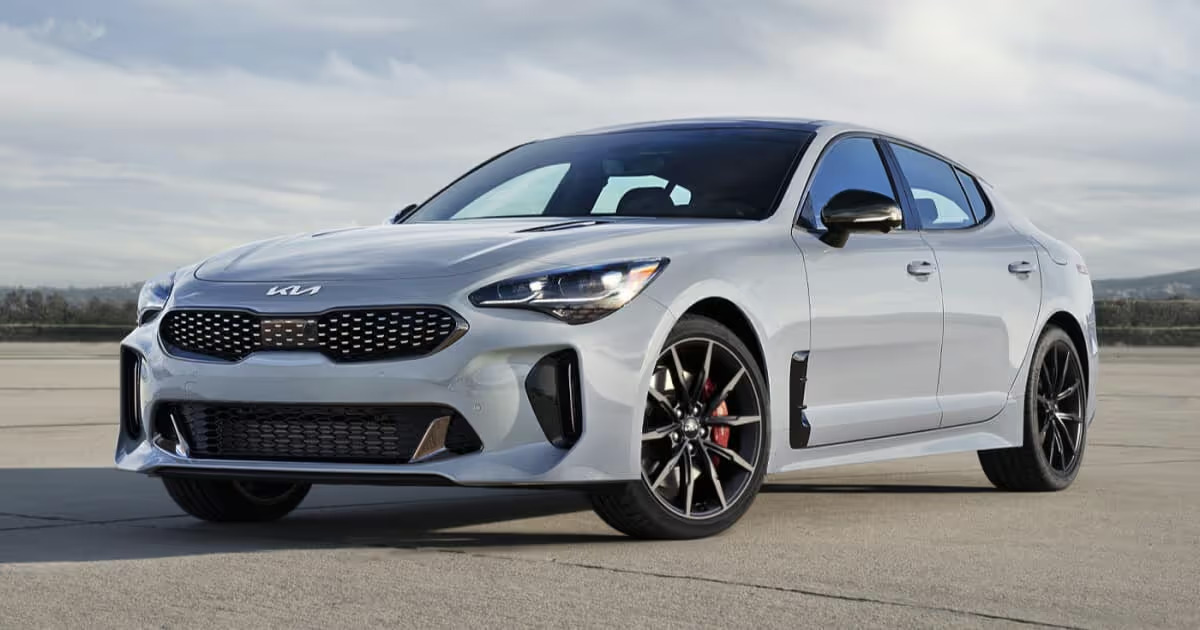
5. Kia Stinger (2018-Present)
The Kia Stinger has made waves in the performance sedan segment, offering a thrilling driving experience at a fraction of the price of its competitors. Despite being positioned as a sports sedan, the Stinger has also surprised many owners with its long-term durability.
Available with both a turbocharged 2.0-liter 4-cylinder and a 3.3-liter twin-turbo V6 engine, the Stinger has delivered a performance-driven package that doesn’t sacrifice reliability. The turbocharged engines, while providing ample power and acceleration, are also surprisingly durable, with many Stingers exceeding 100,000 miles without major issues.
The Stinger’s handling, which is one of its standout features, is paired with an exceptionally strong build quality. Its chassis, suspension, and drivetrain components are all engineered to last, contributing to its ability to perform well over time. Owners of the Stinger often report that the car continues to feel tight and responsive even after many miles, which is a testament to the quality of the engineering behind it.
Additionally, the vehicle’s interior holds up well to daily use, with high-quality materials that resist wear. The cabin remains quiet, comfortable, and sophisticated, even as the vehicle racks up significant mileage.
What makes the Stinger particularly impressive in terms of longevity is its combination of performance and practicality. Unlike many sports sedans that require frequent repairs as they age, the Stinger has proven to be reliable with proper maintenance.
Its robust engine options, paired with Kia’s dedication to quality construction, have made it one of the brand’s most surprising models when it comes to lasting power. For those who want a sports sedan that can deliver both thrills and long-term reliability, the Stinger has proven to be a strong contender in the market.
5 Kia Models That Fail Early
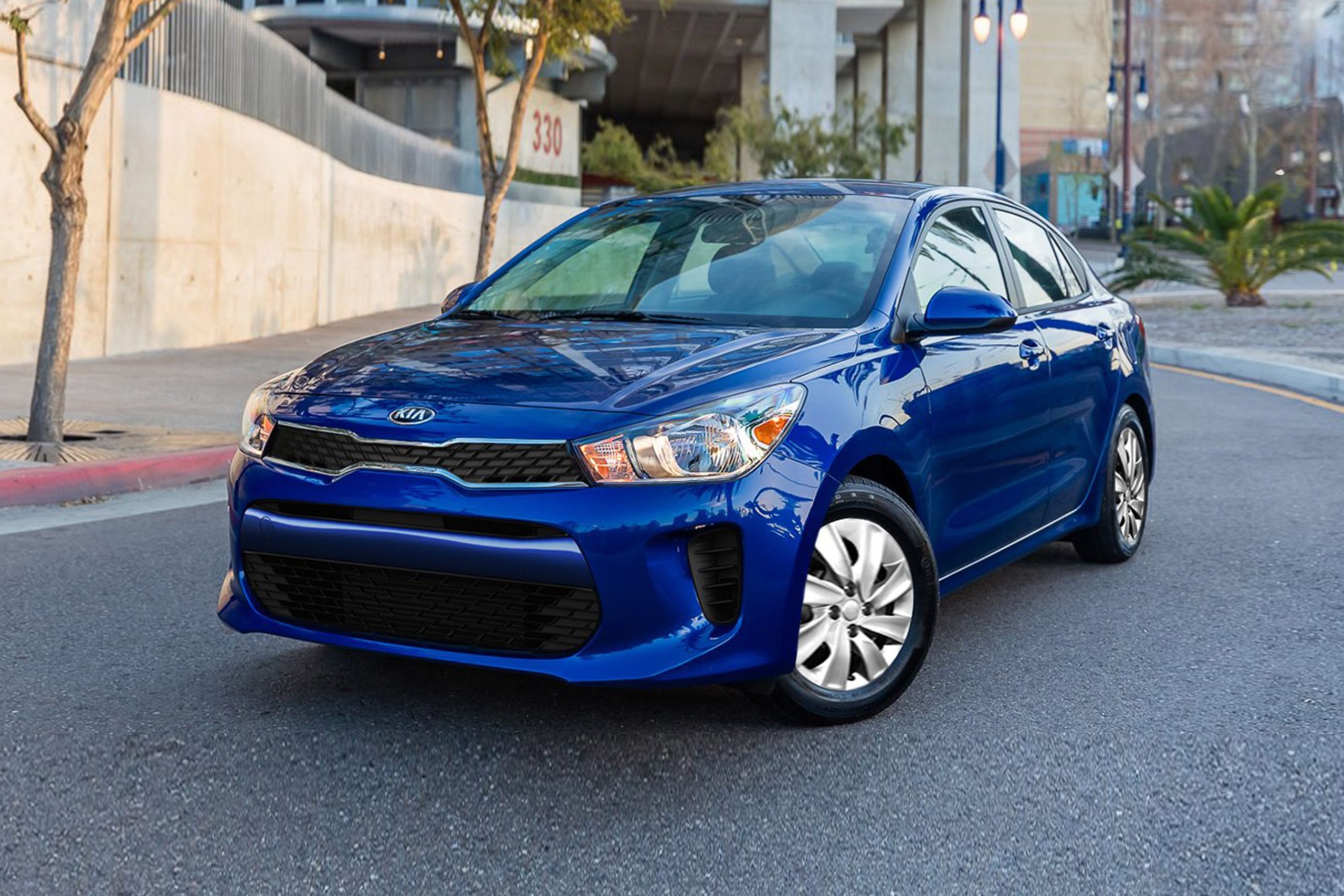
1. Kia Rio (2012–2017)
At first glance, the Kia Rio seems like a practical choice for budget-conscious buyers. With its compact size, good fuel economy, and low purchase price, it checks many boxes for first-time car owners, students, or city dwellers looking for an efficient commuter. However, the Rio models from 2012 to 2017 tend to falter well before they hit the 100,000-mile mark. One of the most concerning issues is engine oil consumption.
This problem often sneaks up on owners, as the engine can burn oil without visible leaks or warning lights. If not closely monitored, this gradual oil loss leads to decreased compression, rough idling, and ultimately full engine failure. For a car marketed as a low-cost solution, this kind of issue turns it into an expensive liability.
The automatic transmissions in these Rios are also problematic. Many drivers report early symptoms of transmission hesitation, hard shifting, or jerking between gears, particularly at low speeds. These issues often surface before 75,000 miles and can escalate quickly.
In some cases, complete transmission replacements are needed—repairs that can easily exceed the value of the vehicle itself. The reliability of the transmission is made worse by the fact that Kia did not equip these models with a traditional dipstick, making regular fluid checks difficult for the average owner. This lack of transparency in maintenance only compounds the potential for early failure.
Beyond the powertrain, the construction of the Rio reflects its economy-car pricing. Interior plastics degrade quickly under sunlight, the seats lose support, and electrical issues like failing window regulators and malfunctioning instrument clusters become common with age.
Small problems add up—door seals let in water, trunk releases stop working, and dashboards rattle persistently. While every car will show wear over time, the Rio accelerates this process far too quickly. For buyers expecting a simple, no-nonsense vehicle that lasts, the Rio can become a cautionary tale in how cost-cutting measures directly impact long-term durability.
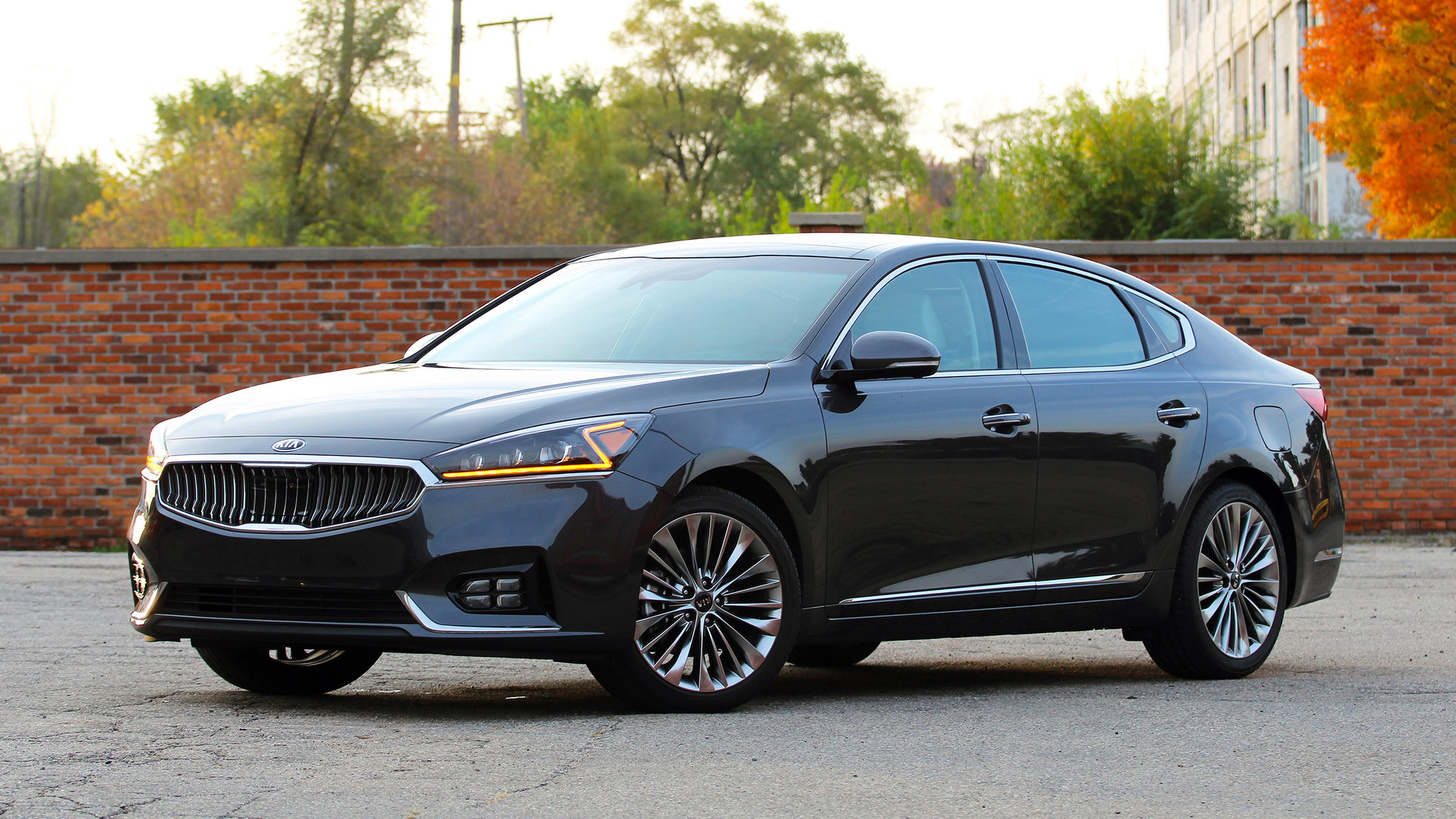
2. Kia Cadenza (2014–2020)
The Kia Cadenza entered the market as a bold move by Kia to establish a presence in the near-luxury sedan segment. With sleek styling, an upscale cabin, and a strong V6 engine, it offered many of the bells and whistles of premium competitors at a more accessible price. But while the Cadenza looked and felt luxurious on the surface, its long-term dependability leaves much to be desired.
Early signs of trouble include the infotainment system becoming unresponsive, HVAC controls failing intermittently, and frequent battery drain issues that leave owners stranded with a dead vehicle after just a night of sitting idle. These electronics-related problems plague many model years and often recur even after replacement parts are installed.
Mechanically, the Cadenza isn’t without its own set of vulnerabilities. The 3.3L V6, while smooth and adequately powerful, has been associated with oil leaks, particularly around the valve cover and timing chain areas. These aren’t merely messy annoyances—they lead to performance degradation, overheating risks, and expensive labor-intensive repairs if left unaddressed.
Some owners have also reported premature wear on the timing chain tensioners, which, if neglected, can cause severe engine damage. Combine these issues with an overly complex drivetrain layout, and you’re left with a vehicle that becomes increasingly expensive to maintain as it ages. These maintenance needs often emerge earlier than most expect in a car positioned as a long-distance cruiser.
Then there’s the issue of depreciation. While depreciation is expected for any vehicle, the Cadenza’s lack of long-term reliability accelerates its drop in resale value. This not only hurts owners financially but also makes it harder to justify investing in necessary repairs.
The car’s rare status in the used market also means fewer mechanics have experience with it, and parts can be more difficult to source. Ultimately, the Cadenza is a car that overpromises and underdelivers. It might dazzle early on, but that shine fades quickly as owners are met with recurring problems and repair costs that rival those of true luxury brands, without the prestige or support network.

3. Kia Sorento (2011–2014)
The 2011–2014 Kia Sorento stands as one of the brand’s more infamous problem children. This generation was launched with great fanfare, promising to be a refined, family-friendly SUV with modern design and improved engineering. However, in practice, it became a prime example of overambition meeting under-execution. Perhaps the most notorious issue tied to these Sorentos involves catastrophic engine failure.
Many of these vehicles—particularly those equipped with the 2.4L GDI engine—suffer from bearing wear due to oil flow restrictions, which leads to knocking sounds, metal shavings in the oil, and ultimately, a seized engine. This problem became so widespread that it triggered multiple recalls and lawsuits, causing significant damage to Kia’s reputation.
Transmission problems also plague this generation. Owners frequently report hard or delayed shifting, transmission slipping, or outright failure, sometimes occurring as early as 60,000 miles. Some drivers described terrifying instances of the vehicle lurching forward or refusing to engage properly in drive mode.
These issues are not only dangerous but also extremely expensive to address. What makes matters worse is that many failures happen just outside of warranty, leaving owners with repair quotes exceeding $3,000 to $5,000 for a vehicle that’s barely crossed the halfway point in its expected lifespan. The transmission control module (TCM) has also been a point of concern, with sporadic malfunctions that confuse diagnostics and frustrate even experienced technicians.
Compounding the mechanical issues is a slew of build-quality flaws. Interior trim begins to rattle and peel far too early, while paint fades or chips away under normal exposure. Suspension components, particularly control arms and bushings, wear out quickly and contribute to a degraded ride quality. Drivers often experience clunks, pops, and uneven tire wear after just a few years on the road.
These problems are worsened by Kia’s inconsistent dealer support during the early 2010s, which left many owners feeling abandoned. Though newer Sorento generations have drastically improved, the 2011–2014 era remains a painful memory for many and serves as a stark reminder of the risks that come with being an early adopter of a newly redesigned model.
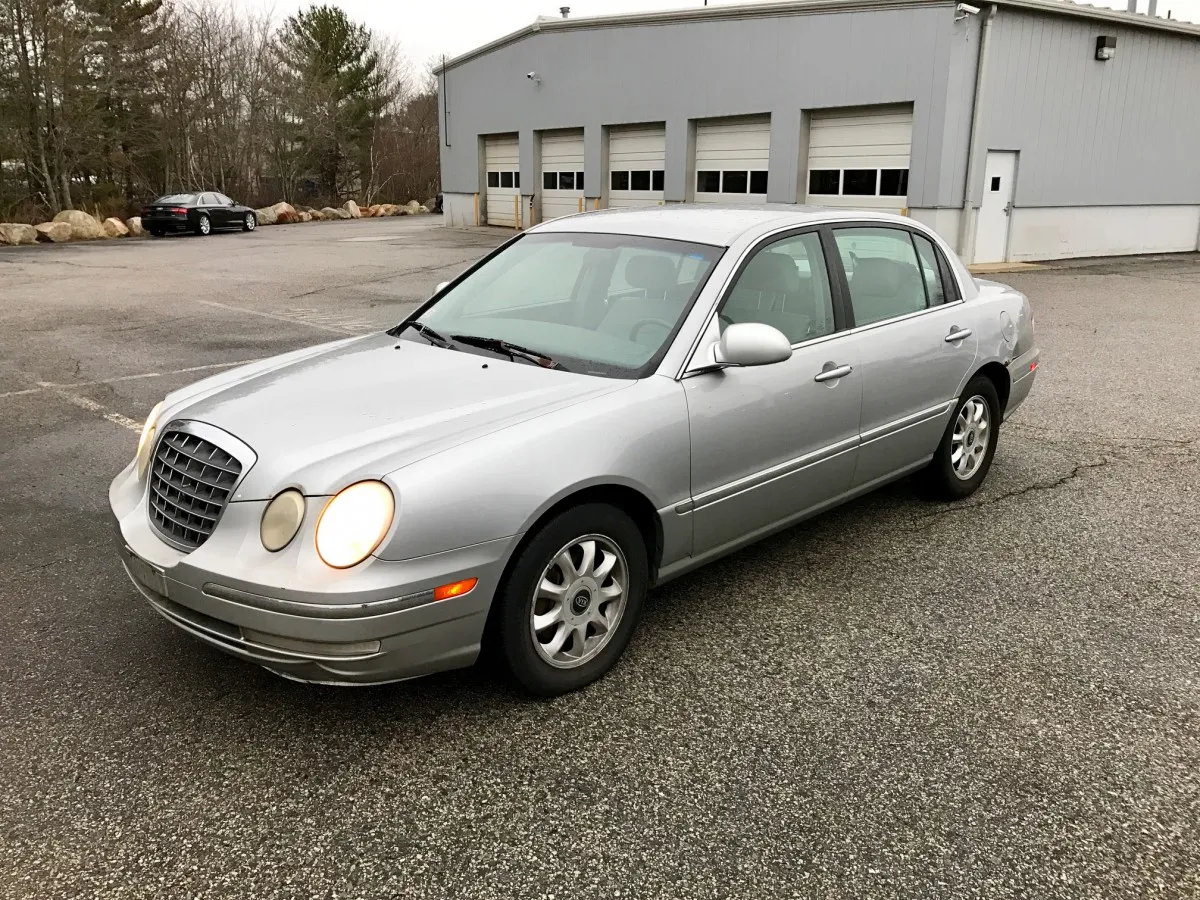
4. Kia Amanti (2004–2009)
The Kia Amanti was introduced at a time when Kia was beginning to test the waters of upscale vehicle design. Drawing heavy visual influence from European sedans like the Mercedes-Benz E-Class, it featured a large body, spacious interior, and a host of comfort-oriented features not commonly found in Kia’s earlier lineups.
However, the Amanti’s visual appeal masked a series of serious flaws that became glaring as the vehicle aged. One of the most consistent complaints centers around the 3.5L and 3.8L V6 engines, which often suffered from coolant leaks, failing head gaskets, and cracked manifolds. These problems aren’t just inconvenient—they’re extremely costly and can lead to engine overheating, warping, and even permanent damage if left unresolved.
The electrical system in the Amanti also proved to be a significant weak point. Owners frequently encountered issues with power windows failing, seat controls malfunctioning, and dashboard lights flickering or failing. These issues weren’t always traceable to a specific fuse or circuit, leading to diagnostic headaches and costly guesswork repairs. As the car aged, its once-refined electronics often turned into a web of shorts, dead switches, and unreliable subsystems.
In some cases, basic functionality like the central locking system or trunk release would simply stop working with no warning or consistent pattern. For a car intended to provide a premium experience, this unreliability becomes not just frustrating, but embarrassing.
Perhaps what sealed the Amanti’s fate as a short-lived model was its mismatch between design ambition and brand support. It was introduced before Kia had developed the infrastructure or brand perception to support a semi-luxury vehicle. As a result, many Kia dealerships were unprepared to handle the more sophisticated needs of Amanti customers.
Parts were harder to come by, knowledgeable technicians were scarce, and resale value plummeted. The Amanti, in hindsight, was a case of “too much, too soon” for Kia. Though it laid the groundwork for future models like the Cadenza and K900, it remains a vehicle best remembered for its fragile reliability and the headaches it caused for those who hoped to keep it on the road long-term.
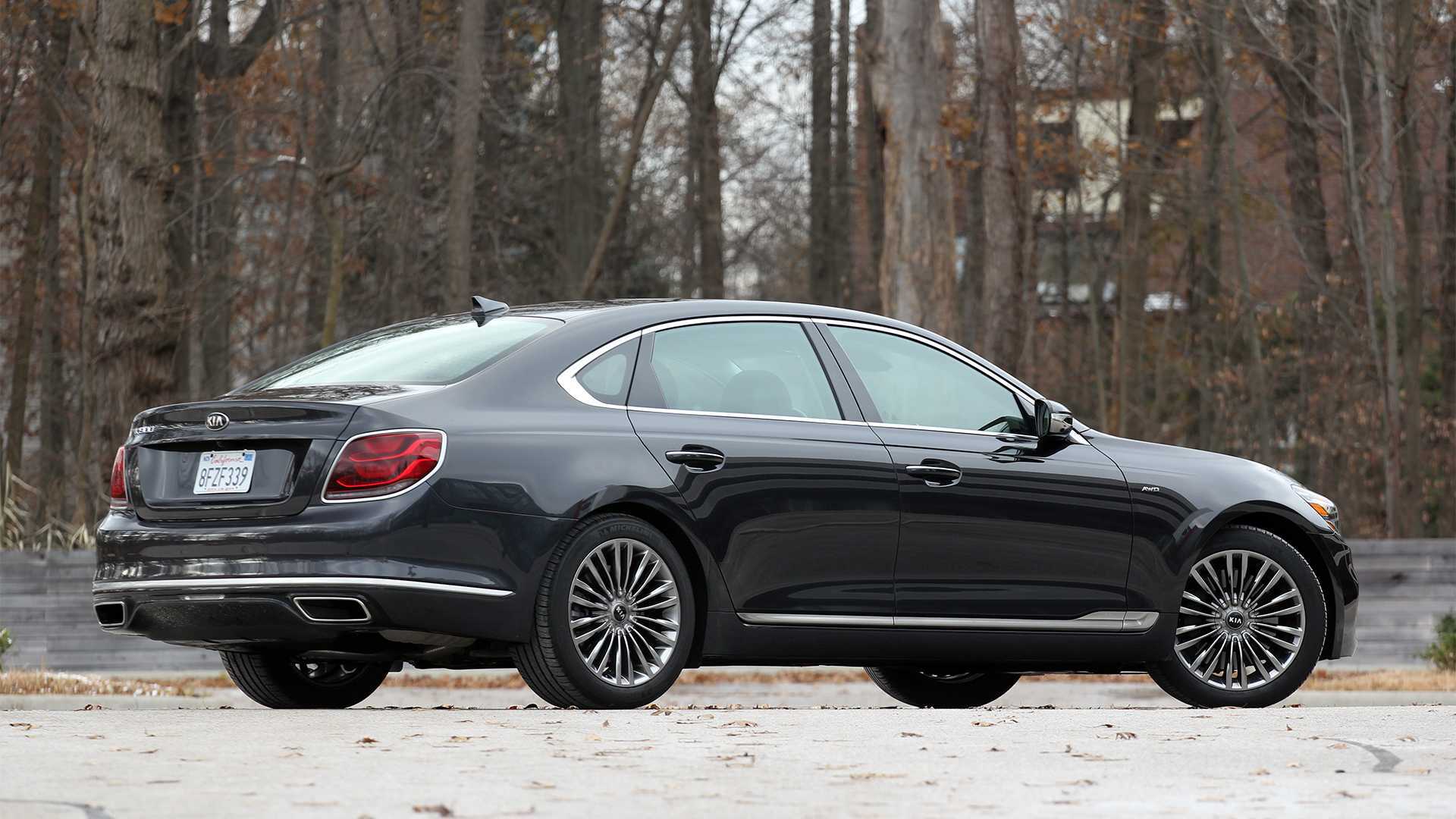
5. Kia K900 (2015–2020)
The Kia K900 was marketed as the brand’s flagship luxury sedan, aimed squarely at the high-end crowd typically loyal to brands like Lexus, Audi, and BMW. On paper, the K900 had the credentials: a smooth V6 or V8 engine, premium Nappa leather interiors, advanced infotainment systems, and a whisper-quiet ride.
But the reality of owning one often fell short. The K900’s initial appeal quickly wore off for many owners as electrical gremlins began to surface. Malfunctioning backup cameras, frozen touchscreens, glitchy navigation systems, and dead battery complaints became frequent topics in owner forums. These issues not only hurt usability but also erode trust in the car’s reliability as a high-end executive sedan.
Beyond the digital troubles, the K900’s mechanical components also had their share of problems. The V8 engine, while powerful and smooth, proved sensitive to oil quality and maintenance schedules. Neglect—even minor—could lead to sensor failures, misfires, or even timing chain tensioner issues.
Because the engine was relatively rare in Kia’s lineup, parts could be difficult to source, and not every technician was equipped or trained to service it. The air suspension system in higher trims also proved to be a ticking time bomb, with many units failing around the 70,000-mile mark. Replacements are expensive and often backordered, leading to prolonged downtimes and inflated repair costs.
In the broader market, the K900 suffers from a profound identity crisis. It offers luxury features, but without the brand prestige that helps justify high upkeep costs. As a result, resale values are poor, and used examples are often sold far below their original sticker price, which might seem like a bargain until expensive repairs come into play.
Kia has since pulled the K900 from many markets, recognizing that the model struggled to connect with consumers. For those who bought in hoping to enjoy a long-term luxury experience without the badge tax, the K900 was a painful reminder that luxury without durability rarely holds its value—or its promise.
Also Read: 10 Cars With Best Dash Designs That Bring Innovation
Kia’s journey from underdog to industry contender is nothing short of impressive. The brand has shaken off its early image of mediocrity and emerged as a serious player in the automotive landscape. Today, Kia offers a diverse lineup of vehicles that caters to a wide range of consumers, from budget-conscious students and small families to luxury seekers and SUV enthusiasts.
Their commitment to innovation, extended warranties, and competitive pricing has resonated with buyers across the globe. However, as this article has shown, Kia’s rise has not been without its bumps. While some models have truly stood the test of time, others have struggled to maintain their integrity and performance, especially in the long term.
The five Kia models that surprise with their longevity—the Optima, Soul, Sedona, Sportage, and Forte—highlight what the brand does best: practical design, solid engineering, and consistent performance. These vehicles tend to rely on simpler, naturally aspirated engines, conventional transmissions, and proven platforms.
They don’t rely on flashy gimmicks or overly complex technology, and this simplicity has translated into long-term reliability. For thousands of owners, these cars have been dependable companions through years of daily commuting, road trips, and family adventures. Many of them have exceeded 150,000 or even 200,000 miles without requiring major repairs, a testament to how far Kia has come in terms of durability and build quality.
On the flip side, the models that fail early—the Rio, Cadenza, Sorento (2011–2014), Amanti, and K900—serve as important cautionary tales. These vehicles often suffer from early engine trouble, electrical system failures, or costly transmission issues.
While some of these problems can be chalked up to Kia’s growing pains or experimental designs, the result is the same for owners: frustration, unexpected expenses, and in some cases, complete vehicle replacement far earlier than anticipated. For those who bought these cars expecting the same longevity as Kia’s better-performing models, the experience has been disheartening. It’s a stark reminder that not all vehicles from the same brand share the same level of reliability.
Understanding this disparity is crucial for anyone considering a Kia vehicle, especially in the used car market. While a sleek design, advanced feature list, or low price point can be enticing, longevity should never be an afterthought. Investing in a car that will last doesn’t just save money; it also builds confidence in the vehicle you depend on every day.
Kia has proven that it can build cars that go the distance—some of its models can easily rival the longevity of Honda, Toyota, and Hyundai vehicles. But it also proves that consumers must do their homework, especially when looking at models with more ambitious technology or less-established track records.
In the end, the Kia brand holds a lot of promise, and many of its models reflect that promise fulfilled. By recognizing which vehicles are built to last and which are more likely to falter, consumers can make smarter, more informed decisions. As Kia continues to evolve and innovate, the hope is that more of its lineup will follow the lead of its most reliable models, delivering not just initial satisfaction but enduring value for years to come.

